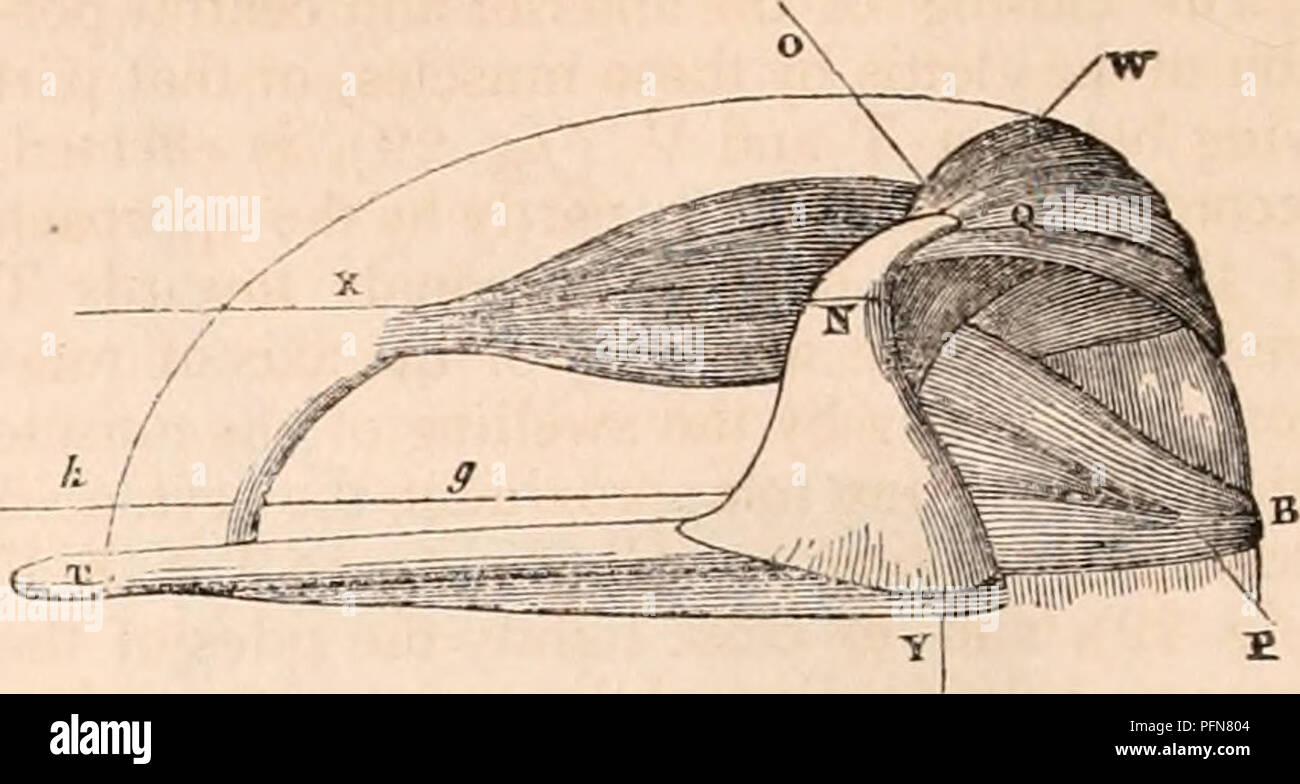. The cyclopædia of anatomy and physiology. Anatomy; Physiology; Zoology. A view of the larynx from above. (From Mr.Willis.) The mucous membrane is removed to shew the ligaments and muscles of the glottis. "N F, N F, the arytenoid cartilages ; T V, the vocal ligaments ; N X, the right crico-arytenoideus lateralis, the left is removed ; Xt> L, the ring of the cricoid capable of rotating on the axis R S ; e e, the crico-aryte- noidei postici ; E, the junction of the wings of the thyroid. Lauth, Mem. de 1'Acad. deMed. 1835.. A portion of Jig. 29 enlarged to demonstrate the di- rection and

Image details
Contributor:
Central Historic Books / Alamy Stock PhotoImage ID:
PFN804File size:
7.1 MB (244.6 KB Compressed download)Releases:
Model - no | Property - noDo I need a release?Dimensions:
2163 x 1155 px | 36.6 x 19.6 cm | 14.4 x 7.7 inches | 150dpiMore information:
This image is a public domain image, which means either that copyright has expired in the image or the copyright holder has waived their copyright. Alamy charges you a fee for access to the high resolution copy of the image.
This image could have imperfections as it’s either historical or reportage.
. The cyclopædia of anatomy and physiology. Anatomy; Physiology; Zoology. A view of the larynx from above. (From Mr.Willis.) The mucous membrane is removed to shew the ligaments and muscles of the glottis. "N F, N F, the arytenoid cartilages ; T V, the vocal ligaments ; N X, the right crico-arytenoideus lateralis, the left is removed ; Xt> L, the ring of the cricoid capable of rotating on the axis R S ; e e, the crico-aryte- noidei postici ; E, the junction of the wings of the thyroid. Lauth, Mem. de 1'Acad. deMed. 1835.. A portion of Jig. 29 enlarged to demonstrate the di- rection and result of the forces of the muscles of the larynx. O P, the horizontal projection of the axis of articulation ; T V, the vocal ligament; g h, the direction of the force of the thyro-arytenoideus ; N X, of the crico-arytenoideus lateralis; N W, of the crico-arytenoideus posticus ; N Y, of the arytenoideus transversus. upwards and backward, corresponding to the superior ligaments and ventricles, where, ac- cording to Lauth, they terminate without reaching the arytenoid. Some fibres of the thyro-arytenoid take an oblique direction back- wards and downwards, arising immediately below the superior internal margin of the angle of the thyroid, and are inserted into the ver- tical prominence of the arytenoid cartilage: they are sometimes detached from those passing horizontally, as in d, (fig 28, ) constituting the thyro-arytenoidei superiores of Albinus, but they are sometimes described as one muscle. The thyro-arytenoideus corresponds to the internal surface of the thyroid cartilage, from which it is separated by some loose cellular and adipose tissue. Internally it is in contact with the inferior vocal ligament, which lies in contact with the thickest part of this muscle, the bulk of which causes the vocal ligaments on each side to project towards the mesial line and contracts the aperture of the larynx. Some anatomists consider that the thyro-arytenoid ligaments consist of nothing